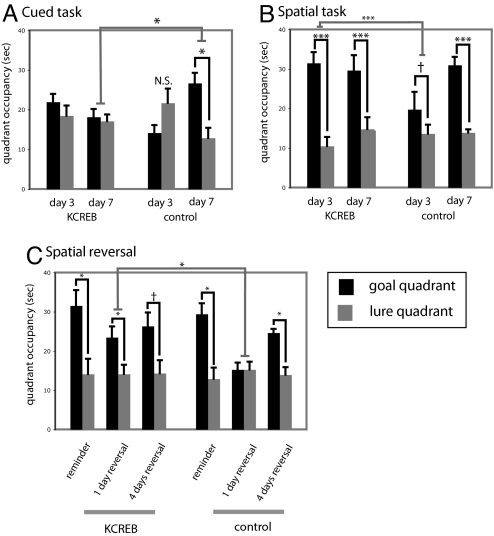Fig. 2.
Impairment of striatal plasticity through inhibition of the transcription factor CREB impairs cued learning and enhances spatial learning. (A) Transgenic animals with impaired CREB activity in the dorsal striatum (16) (n = 10) showed no learning of the cued task after 7 days of training, whereas control animals (n = 7) showed significant bias toward the goal quadrant (black) relative to the lure quadrant (gray) by day 7 (mean ± SEM; see text for statistics). (B) Transgenic animals (n = 8) showed robust spatial learning by the third day of training in the spatial task, whereas controls (n = 8) required further training to develop a spatial bias; this enhancement in spatial learning recapitulates that seen after dorsal striatal lesions (Fig. 1). (C) Transgenic animals again show accelerated spatial learning after a spatial reversal. Spatial bias toward the original training quadrant persisted after 2 days of reminder training in both groups. After 1 day of reversal, learning of the new spatial location was exhibited by transgenic animals but not controls; both groups exhibited spatial learning after more extensive reversal training (all graphs display mean ± SEM; see text for details of statistical analysis). †, P < 0.1; *, P < 0.05; **, P < 0.01; ***, P < 0.005.

